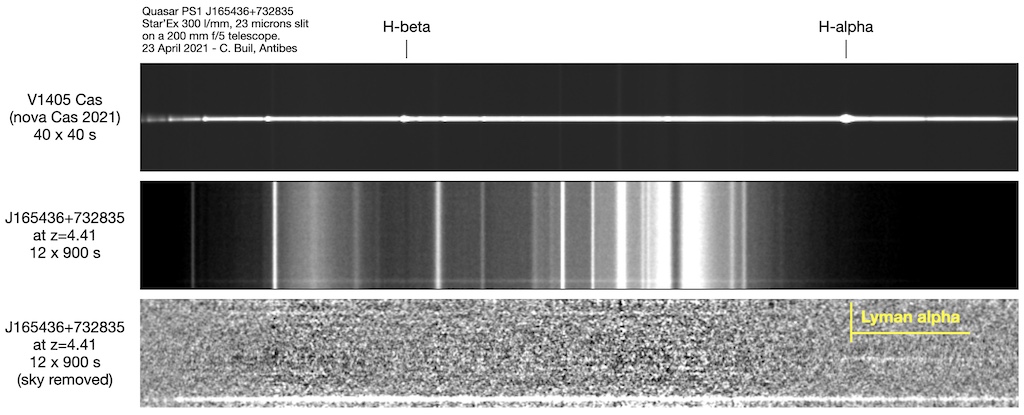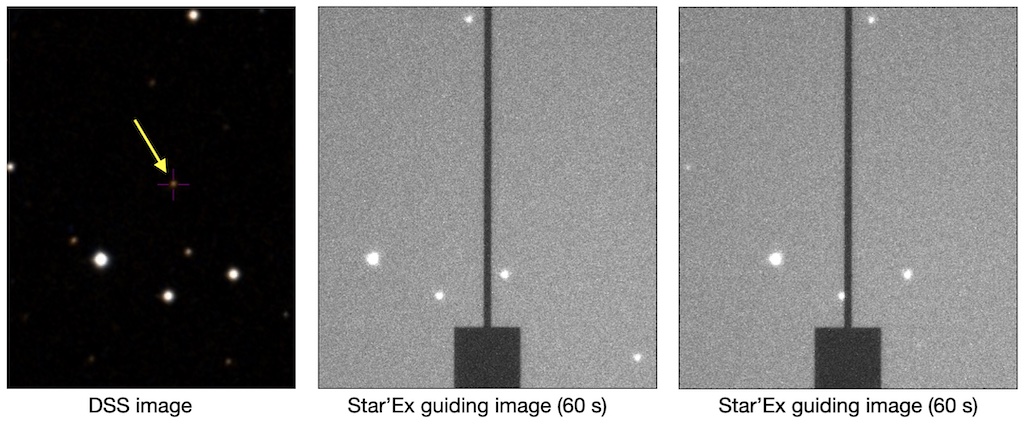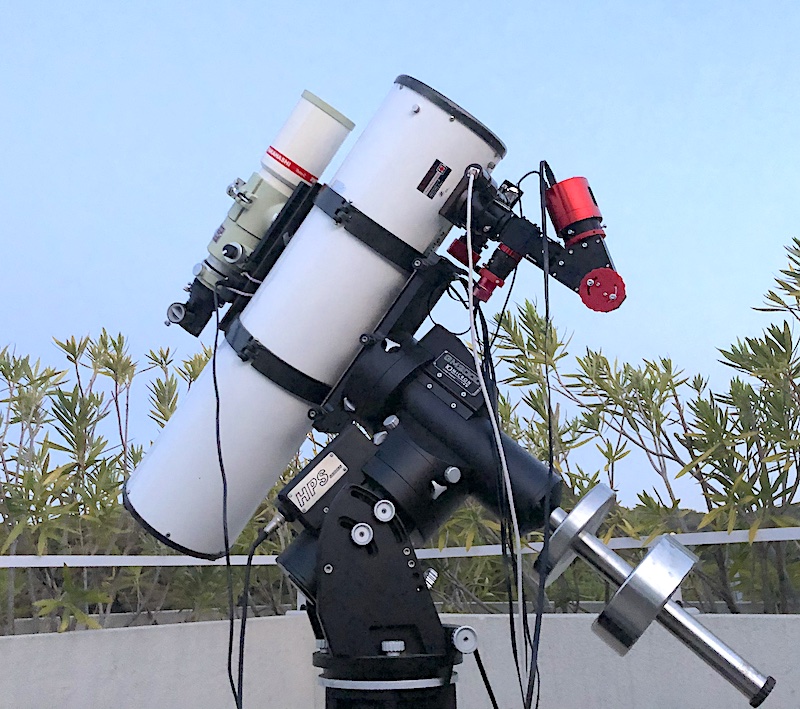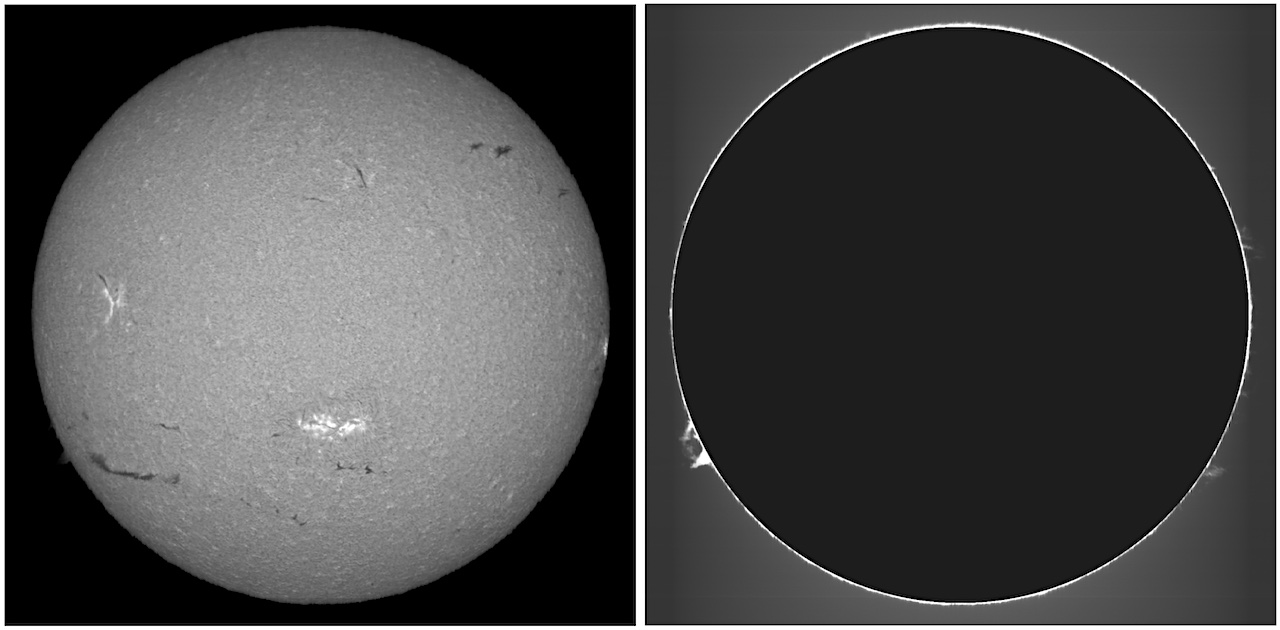We have good weather in Southern France, I recorded a spectrum of APM 08279+5255 last night to examine the broad absorption features.
Robin, how did you extract the spectra from the PS1-ELQ catalogue ?
Jean-Philippe
QSO PS1J161737_595020 at z=4.3
-
Robin Leadbeater
- Posts: 1957
- Joined: Mon Sep 26, 2011 4:41 pm
- Contact:
Re: QSO PS1J161737_595020 at z=4.3
I am not sure where they are available in digital form. I just overlaid the images of the spectra from the Schindler et al papers.JP Nougayrede wrote:
Robin, how did you extract the spectra from the PS1-ELQ catalogue ?
Jean-Philippe
Cheers
Robin
LHIRES III #29 ATIK314 ALPY 600/200 ATIK428 Star Analyser 100/200 C11 EQ6
http://www.threehillsobservatory.co.uk
http://www.threehillsobservatory.co.uk
-
JP Nougayrede
- Posts: 154
- Joined: Tue Oct 20, 2015 8:33 pm
Re: QSO PS1J161737_595020 at z=4.3
Ok, thanks Robin.
Here is the classic lensed broad absorption quasar APM 08279+5255 yesterday night with a standard Alpy and T200 Newton near downtown Toulouse
With a quick reduction in Demetra (could optimize in Isis ?), the spectrum is too noisy to clearly see broad absorption systems in the lyman forest. Nor the lyman break.
Funily, a quick spectrum with a star analyser on a T600 under dark skies (Pic du Midi) produced a better result
https://www.webastro.net/uploads/imagep ... f36440.jpg
https://www.webastro.net/uploads/imagep ... 3fe017.jpg
The Lyman break is clearly visible on your spectra of the quasars at z 4.4 and 4.5. Again, very nice & impressive results Robin !
Here is the classic lensed broad absorption quasar APM 08279+5255 yesterday night with a standard Alpy and T200 Newton near downtown Toulouse
With a quick reduction in Demetra (could optimize in Isis ?), the spectrum is too noisy to clearly see broad absorption systems in the lyman forest. Nor the lyman break.
Funily, a quick spectrum with a star analyser on a T600 under dark skies (Pic du Midi) produced a better result
https://www.webastro.net/uploads/imagep ... f36440.jpg
https://www.webastro.net/uploads/imagep ... 3fe017.jpg
The Lyman break is clearly visible on your spectra of the quasars at z 4.4 and 4.5. Again, very nice & impressive results Robin !
-
Christian Buil
- Posts: 1432
- Joined: Mon Sep 26, 2011 6:59 pm
- Contact:
Re: QSO PS1J161737_595020 at z=4.3
Robin, your observations of these distant quasars are fantastic. It is an achievement and it must raise enthusiasm!
Your magnificent work inspired me to make an observation with the Star'Ex spectrograph (3D-printing) of the quasar J1654436, but unfortunately with a more modest telescope (8-inch Newton) and a terribly polluted sky (French Cote d'Azur):

At the top the spectrum of the nova Cas 2021 observed the same night, in the middle the spectrum of the quasar + pollution, at the bottom the remote sky. The Lyman alpha spectrum is detected at the very limit (because presence of the photon noise - street light pollution + moon light).
Star'Ex use a 300 g/mm grating + 23 microns slit + ASI183MM CMOS camera (CMED algorithm for the processing).
The quasar is not visible on the guide camera image (here a ASI290 Mini 60 seconds exposure) - the sky magnitude is estimated to 16/arcsec:

(the position relative to the slit is only estimated during guiding).
The setup:

Note that Sol'Ex / Star'Ex instrument allows to observe both the Sun at magnitude -26.7 and a distant quasar at magnitude 19

(Sol'Ex image taken the 22 April 2021)
Christian Buil
Your magnificent work inspired me to make an observation with the Star'Ex spectrograph (3D-printing) of the quasar J1654436, but unfortunately with a more modest telescope (8-inch Newton) and a terribly polluted sky (French Cote d'Azur):

At the top the spectrum of the nova Cas 2021 observed the same night, in the middle the spectrum of the quasar + pollution, at the bottom the remote sky. The Lyman alpha spectrum is detected at the very limit (because presence of the photon noise - street light pollution + moon light).
Star'Ex use a 300 g/mm grating + 23 microns slit + ASI183MM CMOS camera (CMED algorithm for the processing).
The quasar is not visible on the guide camera image (here a ASI290 Mini 60 seconds exposure) - the sky magnitude is estimated to 16/arcsec:

(the position relative to the slit is only estimated during guiding).
The setup:

Note that Sol'Ex / Star'Ex instrument allows to observe both the Sun at magnitude -26.7 and a distant quasar at magnitude 19

(Sol'Ex image taken the 22 April 2021)
Christian Buil
-
Robin Leadbeater
- Posts: 1957
- Joined: Mon Sep 26, 2011 4:41 pm
- Contact:
Re: QSO PS1J161737_595020 at z=4.3
Thanks Christian,Christian Buil wrote:Robin, your observations of these distant quasars are fantastic. It is an achievement and it must raise enthusiasm!
The Lyman alpha spectrum is detected at the very limit (because presence of the photon noise - street light pollution + moon light).
For you to detect anything is remarkable in your conditions. It is good that the redshift was enough to push Ly alpha out of the worst light pollution. It is funny to think that perhaps you would not see anything if the quasar was nearer.
Cheers
Robin
LHIRES III #29 ATIK314 ALPY 600/200 ATIK428 Star Analyser 100/200 C11 EQ6
http://www.threehillsobservatory.co.uk
http://www.threehillsobservatory.co.uk
-
Christian Buil
- Posts: 1432
- Joined: Mon Sep 26, 2011 6:59 pm
- Contact:
Re: QSO PS1J161737_595020 at z=4.3
Robin, this is absolutely correct, a closer quasar would not have been visible because of the pollution!
Another magic thing: the quasar is impossible to see from my observatory in direct imagery, but visible with a spectrograph (it is not intuitive for beginners!).
Christian
Another magic thing: the quasar is impossible to see from my observatory in direct imagery, but visible with a spectrograph (it is not intuitive for beginners!).
Christian